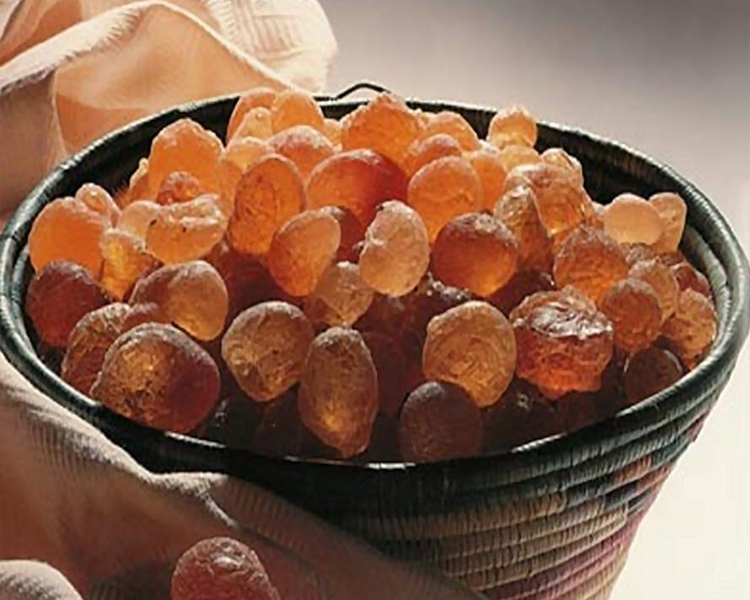Gum Arabic
Gum arabic (from the Acacia senegal, which belongs to the Acacia senegal) is a natural adhesive derived from the gum tree in Sudan and other regions. Gum arabic is characterized by numerous unique properties and features that make it desirable in many industries. Gum arabic consists of a complex group of chemical compounds that give it its unique properties. It is used in various industries such as textiles, pharmaceuticals, canned foods, confectionery, carbonated beverages, industrial oils, cosmetics, paints, and pottery.
Sudanese-produced Gum arabic is known for its consistency and uniformity, and it is exclusively derived from acacia trees. These qualities are not found in Gum arabic produced in other countries. The U.S. Food and Drug Administration has approved Gum arabic as a substance for use in industries. Studies have shown that Gum arabic is completely free from any toxic elements, and it has been listed as a substance with no specified limits or proportions, confirming its safety when its natural properties, purity, and quality are maintained.
The importance of Gum arabic:
Gum arabic is highly important due to its versatility and wide range of applications. It is a natural and renewable resource obtained from Acacia trees, making it an eco-friendly alternative. It acts as an emulsifier and binder in various industries, improving texture and quality. Gum arabic enhances stability, extends shelf life, and prevents ingredient separation. In the food industry, it enhances flavor, texture, and sensory attributes. It is used in encapsulation for controlled release of active ingredients. Gum arabic offers potential health benefits as a dietary fiber. Its applications span across food, pharmaceuticals, cosmetics, textiles, printing, and paint industries.
Gum Arabic Specifications:
- Pure Hand-Selected H.P.S. Gum Arabic.
- Cleaned Gum Arabic.
- Siftings Gum Arabic.
- Dust Gum Arabic.
- Talha Gum Arabic.
- Talha Siftings Gum Arabic.
- Talha Dust Gum Arabic.
- Spray Dried Badr Gum.
- Powdered Badr Gum.
- Kibbled Gum Arabic.
- Kibbled Dust Gum.
More information.
Gum arabic reduces the surface tension of liquids, leading to increased effervescence in carbonated beverages. This can be exploited in what is known as the Diet Cola and Mentos eruption. Gum arabic is a sticky, brownish substance, and gums have various forms and structures depending on their origins and sources. They are typically divided into two types: soluble and water-absorbing.
Kordofan gum is characterized by its tear-shaped or spherical droplet form with a diameter of about 3 cm, or as blocks with angular edges. Its color is very pale white or yellow, and the gum pieces easily break into small parts that are odorless and have a pleasant gel-like taste. The purest and highest quality gum is a pale amber color and is sold in the form of powder, grains, or thin slices. Almost all of it dissolves in water at a ratio of one part gum to two parts water, leaving very small residues of plant material.
Gum droplets exude from cracks in the branches of Acacia trees, and most high-quality Kordofan gum is collected in Sudan from trees that are approximately 6 years old.
Sudan is considered the largest producer of gum arabic in the world, accounting for 70-85% of global production. Most gum arabic produced in Sudan comes from the Acacia tree, which naturally grows in semi-arid regions in Africa and some parts of Asia. Sudan is known for having the largest belt of Acacia trees in its western region.


